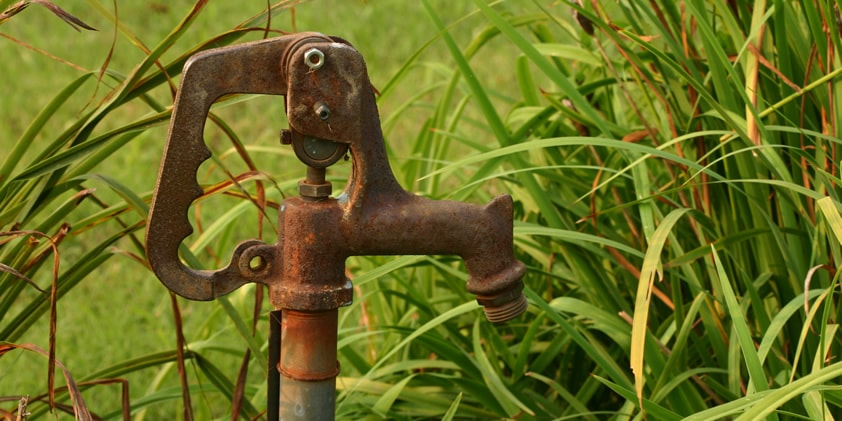
Each parcel of land has a history as old as the earth and sky. It is common for properties to have had many owners through the years. Among the land-use changes that may have occurred is the construction of one or more water wells.
Wells may have been constructed by drilling, augering, jetting, or even by digging a hole or excavating around a spring or seepage. Out-of-service wells of any type may pose potential safety hazards and threats to groundwater quality if not correctly maintained or abandoned (decommissioned).
Potential Problems Caused by Old Water Wells
There may also be liability issues to consider if an old well on your property is proved to be a conduit for contaminants that reach neighboring groundwater.
The biggest problem is that old wells can be forgotten. Casings may deteriorate and rust and new owners or property developers can build over the old well site or unknowingly create a hazardous land use. For example, wastes associated with stables, chicken houses, dumps, etc., that are located over an old out-of-service well hole may flow straight down to the aquifer.
In an area where wells penetrate more than one water-bearing layer, contaminants may reach the groundwater zone of the old well and then travel on to other portions of the aquifer. If the contamination connects with another abandoned well, it could impact other aquifers and threaten operating wells and water supply sources.
Abandoned dug wells do not typically lead to contamination risk for deep aquifers, but their wide diameter, usually 3 to 5 feet, creates a physical safety hazard for construction equipment in addition to a danger to people and animals that may be injured falling into the well.
How to Locate and Identify Old Water Wells on Your Property
Landowners should find the location of any old or out-of-service wells. Clues to the location of these wells include:
- Pipes sticking out of the ground
- Small buildings that may have been a well house
- Depressions in the ground
- The presence of concrete vaults or pits (perhaps covered by lumber or metal plates)
- Out-of-use windmills (windpumps) are likely to be located near an old well.
Other clues and information can be obtained from:
- Old maps, plans, and property title documents
- Information from neighbors
- Additions to an old home (in the past, wells were commonly constructed in basements or under porches to keep the water pumps from freezing and to ease access in the winter.)
- Water utility history: What was the source of water for your home before utility water was available?
What to Do With an Old Water Well
Once a well is determined to have no current or potential future use, a water well contractor should be contacted to give advice about the most appropriate well decommission method. The water well professional will have knowledge of well decommissioning code requirements. Wells should be sealed from the bottom up. In most cases, only well contractors have the right equipment to do this. Any pumps, pipes, related equipment, or blockage should be removed from the well so that it may be filled in and sealed properly.
Approved backfilling and well sealing procedures vary from state to state. They generally require the use of special sealing material, usually cement-bentonite grout or bentonite clay chips. The use of straight Portland cement is usually discouraged because cement shrinks in volume during curing, which creates very small fractures and gaps through which water may continue to penetrate.
In most cases, homeowners are required to notify their local Department of Environmental Protection or Water Quality Division to document the decommissioning of the well. Homeowners are urged to contact these environmental agencies to learn what procedures are required in their region.
Reprinted with permission from the American Ground Water Trust.


